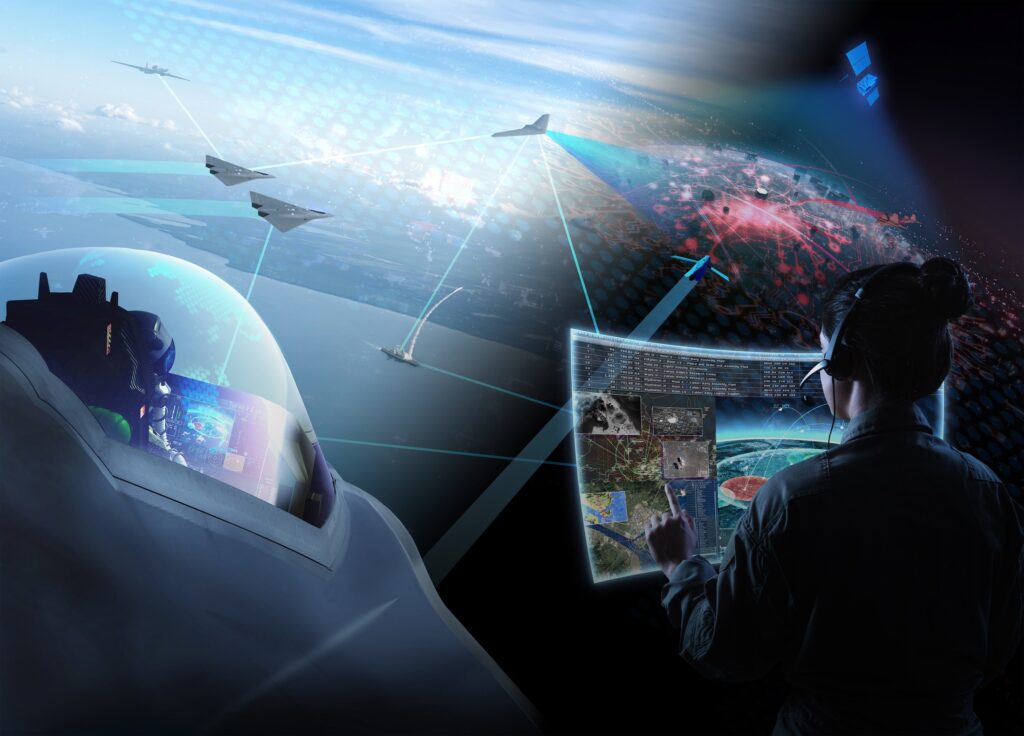THERESA HITCHENS

WASHINGTON: Defense Secretary Lloyd Austin has signed the crucial Joint Warfighting Concept (JWC) outlining the new American way of war — All Domain Operations.
A Pentagon spokesperson confirmed that the JWC was signed by Chairman of the Joint Chiefs of Staff Gen. Mark Milley March 31, and Austin signed off shortly thereafter. There will not be an unclassified version of the document released, however.
In a background briefing for reporters, a senior defense official said that Austin himself will be overseeing its implementation “accelerate the Joint Warfighting Concept through the experimentation and prototyping phases.”
The Joint Requirements Oversight Council (JROC) will issue a series of “strategic directives “over the next few months,” said Brig. Gen. Rob Parker, Joint Staff J6 Deputy Director. The J6 is the Joint Staff’s Command, Control, Communications, & Computers/Cyber directorate.
“Those are still awaiting final signature, to the best of my knowledge,” Parker told an AFCEA DC webinar today. “Certainly some of those will remain pretty controlled and restricted, but I think common themes, and a better understanding for industry of where they can help us, will come out over the next few months here.”
The strategic directives will define joint requirements for the four key tenets of the JWC: joint fires, Joint All Domain Command and Control (JADC2), contested logistics and information advantage.
Parker, who is leading the Joint Staff’s JADC2 Cross-Functional Team, said that as they move to implement the JWC and the accompanying JADC2 strategy via the JROC strategic directives, his team is looking to industry for “solutions that can help us in terms of building out our data fabrics, cloud agnostic environments, security at scale.”
Yes, that is a lot of big data jargon, so a wee bit of explanation for those not familiar with the terms. Data fabrics are sets of common technical standards and APIs (Application Programming Interfaces) that enable otherwise incompatible systems to share data. A cloud agnostic environment simply means storing data on dispersed public servers maintained by any provider such as Google or Microsoft Azure or Amazon Web Services, to allow access from any type of device anywhere. Security at scale refers to cybersecurity writ large, in this case across all the networks and platforms that will be interconnected into the JADC2 meta-network.
Perhaps most critical to security is identity credential and management (ICAM) is software that can verify a user is who they say they are and that they have rights to access the data, Parker added.
“Many have heard my boss, Lt. Gen. [Dennis] Crall, speak to getting after the ICAM solution — we’ve seen a lot of solutions that work well and maybe a post, camp or station, but are not globally expandable to the tactical edge,” he said. “If you don’t know who’s on your network, who’s getting that data, and how you’re protecting it collectively through various levels and methods, JADC2 just isn’t going to work as envisioned.”
Another key cybersecurity element is the Pentagon’s effort to establish zero trust standards. Rather than simply trying to keep unauthorized people out via firewalls and such, zero trust is based on the concept that trust is never granted implicitly but instead must be continually evaluated.
Parker said that as for cloud agnostic platforms and environments, the CFT has high hopes for using commercially provided Low Earth Orbit (LEO) satellite networks for Internet access.
“We’re really looking and interested in this idea of utilizing cloud agnostic, cloud based capabilities, edge computing supported from those LEO platforms. We get a lot of pushback on that because, you know, clearly right now, a lot of commercial transmissions many would say would be very easily intercepted and we would agree with that. We just think we need to move from maybe our previous ways of thinking, where we’re trying to protect everything and acknowledge that: “you know what, the signals probably are, absolutely will be intercepted … that we still have the right levels of assurance and protection and security there to accomplish the mission.”
Indeed, various Pentagon agencies and services have been working with SpaceX’s Starlink mega-constellation to test its potential for JADC2 interconnectivity at far-flung locales.
No comments:
Post a Comment